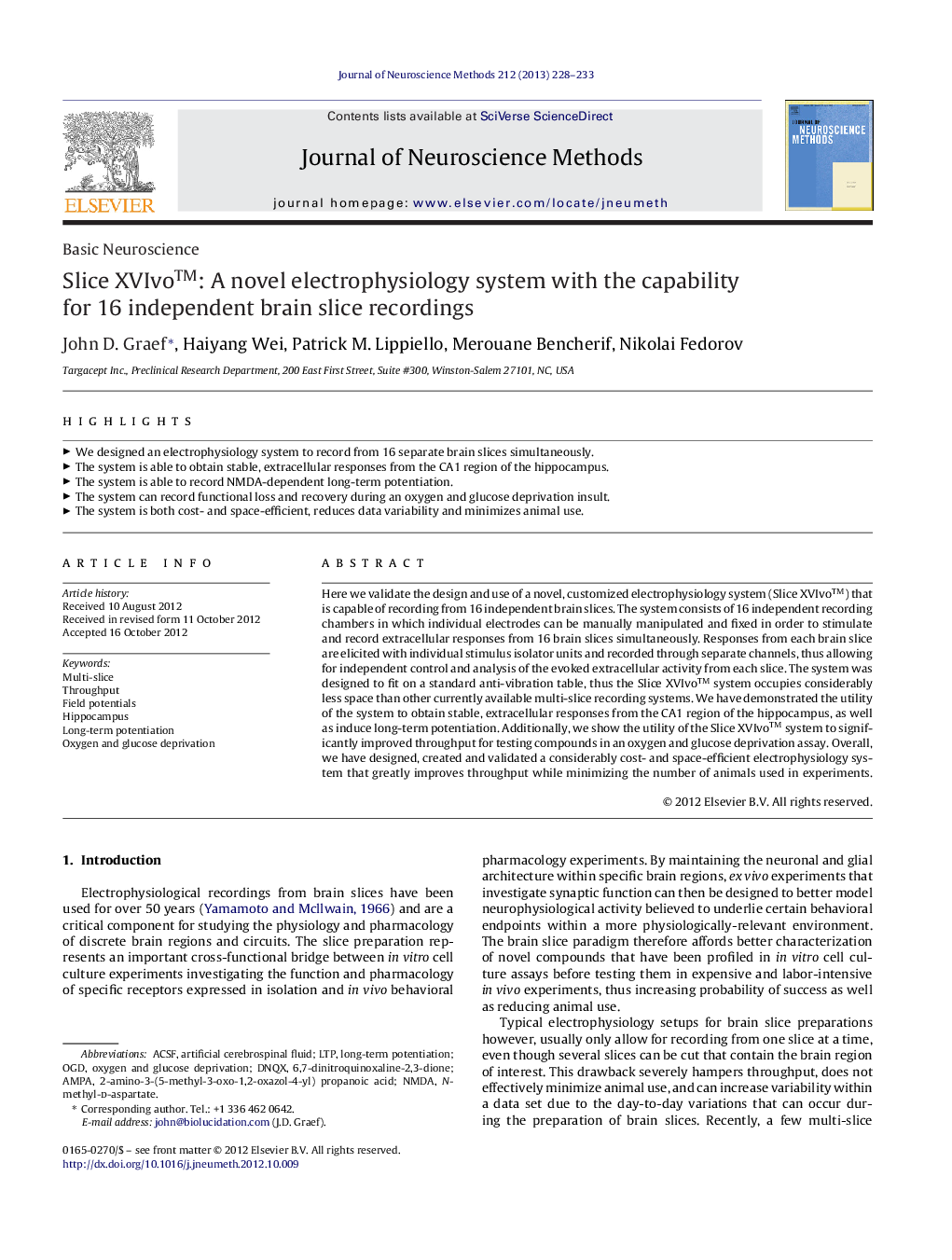| کد مقاله | کد نشریه | سال انتشار | مقاله انگلیسی | نسخه تمام متن |
|---|---|---|---|---|
| 4335003 | 1295114 | 2013 | 6 صفحه PDF | دانلود رایگان |

Here we validate the design and use of a novel, customized electrophysiology system (Slice XVIvo™) that is capable of recording from 16 independent brain slices. The system consists of 16 independent recording chambers in which individual electrodes can be manually manipulated and fixed in order to stimulate and record extracellular responses from 16 brain slices simultaneously. Responses from each brain slice are elicited with individual stimulus isolator units and recorded through separate channels, thus allowing for independent control and analysis of the evoked extracellular activity from each slice. The system was designed to fit on a standard anti-vibration table, thus the Slice XVIvo™ system occupies considerably less space than other currently available multi-slice recording systems. We have demonstrated the utility of the system to obtain stable, extracellular responses from the CA1 region of the hippocampus, as well as induce long-term potentiation. Additionally, we show the utility of the Slice XVIvo™ system to significantly improved throughput for testing compounds in an oxygen and glucose deprivation assay. Overall, we have designed, created and validated a considerably cost- and space-efficient electrophysiology system that greatly improves throughput while minimizing the number of animals used in experiments.
► We designed an electrophysiology system to record from 16 separate brain slices simultaneously.
► The system is able to obtain stable, extracellular responses from the CA1 region of the hippocampus.
► The system is able to record NMDA-dependent long-term potentiation.
► The system can record functional loss and recovery during an oxygen and glucose deprivation insult.
► The system is both cost- and space-efficient, reduces data variability and minimizes animal use.
Journal: Journal of Neuroscience Methods - Volume 212, Issue 2, 30 January 2013, Pages 228–233